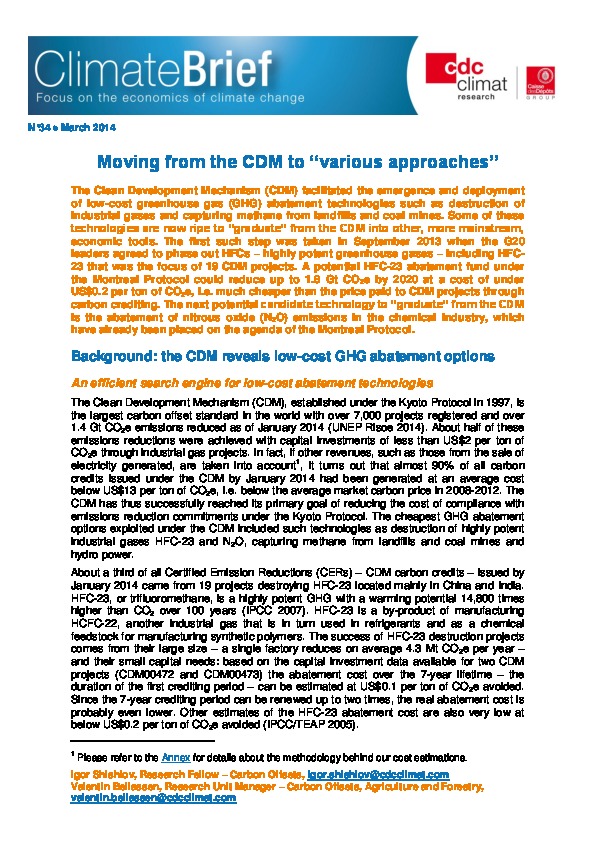Moving from the CDM to “various approaches”
By Igor Shishlov and Valentin Bellassen, I4CE
The Clean Development Mechanism (CDM) facilitated the emergence and deployment of low-cost greenhouse gas (GHG) abatement technologies such as destruction of industrial gases and capturing methane from landfills and coal mines.
Some of these technologies are now ripe to “graduate” from the CDM into other, more mainstream, economic tools. The first such step was taken in September 2013 when the G20 leaders agreed to phase out HFCs – highly potent greenhouse gases – including HFC-23 that was the focus of 19 CDM projects.
potential HFC-23 abatement fund under the Montreal Protocol could reduce up to 1.8 Gt CO2e by 2020 at a cost of under US$0.2 per ton of CO2e, i.e. much cheaper than the price paid to CDM projects through carbon crediting. The next potential candidate technology to “graduate” from the CDM is the abatement of nitrous oxide (N2O) emissions in the chemical industry, which have already been placed on the agenda of the Montreal Protocol.
